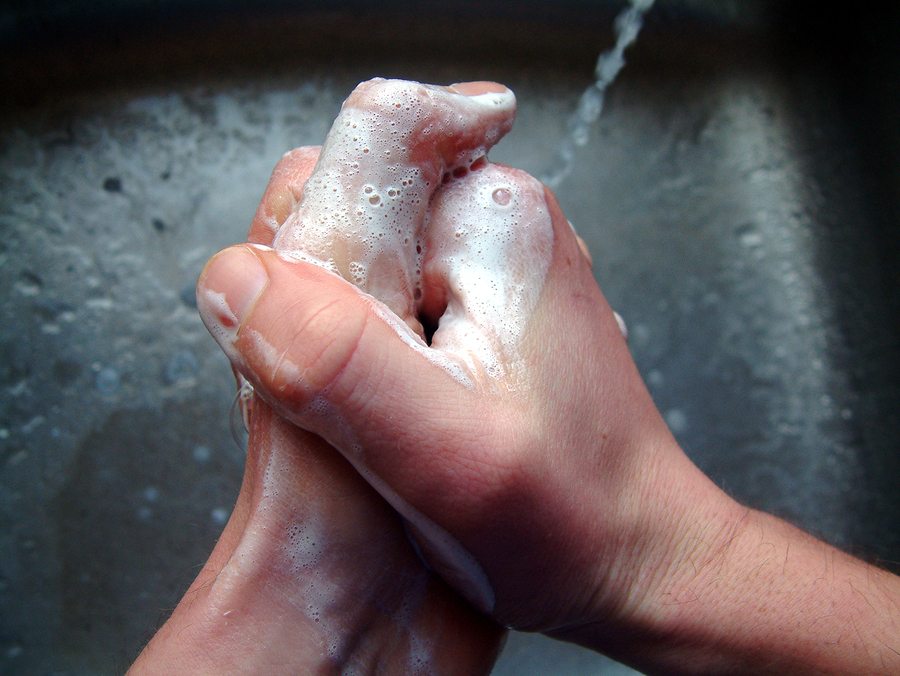While evaluating injury and diseases that affected previously healthy members of the United States Navy and Marine Corps, something surprising was discovered…
…Skin disorders were one of the most common job-related conditions that military personnel were receiving treatment…
Chris Rennix who is the head of the EpiData Center at the Navy and Marine Corps Public Health Center made the discovery. (The center is located in Portsmouth, VA.) Chris also serves as the chair on the American Industrial Health Association’s Occupational Epidemiology committee.
From a business perspective, the high incidence of skin disorders is usually ignored because it’s an easy problem to resolve. The cost of treatment is low and does not significantly impact budgets.
Surprisingly, skin-related diseases and conditions are the second most common type of occupational hazard according NOISH. (The National Institute of Occupational Safety and Health.) More than 13 million employees in the United States are estimated to be exposed to chemicals which can affect the skin.
Occupational Exposure
Some of the most common work-related skin diseases include sensitive cell dermatitis, irritant contact dermatitis, skin cancer, and infection. NOISH, cites the following as source of these diseases and disorders:
- Chemical Exposure: toxic compounds irritate the skin through a series of reactions. Repeat exposure to these compounds can lead to the development of allergies
- Physical agents: hot or cold substances and radiation
- Biological Agents: Plant, animal materials, bloodsucking insects or bugs
- Mechanical trauma: bruising, cuts, and friction
Exposure can occur due to a few different causes such as splashing, immersion, inhalation, or contact with any polluted surface.
Employees who work in healthcare, construction, foodservice, and cosmetology are at the highest risk of exposure.
To go a step further, any type of work environment that requires regular handwashing, hand hygiene, and chemical exposure can lead to a work-related skin condition. Almost all people have some risk of exposure.
NOISH also notes that irritants can be absorbed through the skin without an employee being aware. If the substances can pass through the skin, they have the potential to enter the bloodstream and cause systemic toxicity. Examples of common irritants include pesticides, herbicides, nickel, and formaldehyde. However, many products like chemicals, oils, medications, and dyes can play a part.
Approximately 90-95% of job-related skin diseases in the United States are contact dermatitis with the hand being the primary area of exposure. This finding was discovered by the Wellness Result Research Laboratory at NIOSH. The two types of work contact dermatitis are the following:
- Irritant: This is approximately 80% of all instances of work-related cell dermatitis. In this condition, the skin is exposed to a dangerous substance which causes inflammation of the skin as well as damage primarily in the area of contact.
- Sensitive: This is a situation where an employee is exposed to an allergen which triggers an immune response that involves skin inflammation with repeat exposure.
The sensitive type is more difficult to regulate because when you become allergic, it only takes a small exposure to have that response again.
A high number of allergies develop as a result of occupational exposure to metals. Approximately 10-15% of people have allergies to at least one type of metal.
The two types of cell dermatitis have similar symptoms so telling them apart can be challenging without testing. The extent of the dermatitis depends on the concentration of the material, the period of exposure, and the skin’s condition.
Some individuals have lost their job over this condition. Once a person has developed this type of condition, their physical response to exposure can be dramatic. For example, a person who operates in the aircraft sector and is exposed to hydraulic fluid can have a reaction where their fingers swell. They can’t work in that area any longer.
Diagnosing skin diseases is also difficult because many people see a doctor and then never follow up so there is no way to determine the cause of the problem. Determining what’s actually caused the irritation can be difficult after the fact.
Everyone is exposed to chemicals in their daily life. The soap that you use can create this type of response. Many people who develop a reaction have more sensitive skin in general. It’s unclear what has been the cause as it could be a work-related exposure or an exposure made in the home. If you’re in an area that only uses specific chemicals, you can undergo tests to determine which one was the cause. Many people deal with a wide range of chemicals so it may be difficult to determine the culprit in that case.
Respiratory and Skin Effects
Direct exposure to the skin usually occurs when the skin comes into contact with a polluted surface or when the chemical is applied to the skin. This exposure can take place irregularly and unpredictably so determine your exposure can be difficult as you may not know what, how, when, and where you were exposed.
Direct exposure through breathing in the chemical has been one of the most common risks in an office setting. Determining the cause of the direct exposure such as smoke or dust is sensitive and common but there are no standardized techniques for measuring and evaluating as reported by NIOSH. However, there has been an increased interest in evaluating and measuring exposure.
Preventative Approaches
In order to prevent any skin-related problems in the workplace, OSHA recommends substituting potentially harmful chemicals with safer alternatives, changing job procedures to minimize direct contact, or using personal protective equipment, excellent hygiene, and isolation precautions.
The conventional work-related controls which can be used to protect employees from skin irritation are the following in order of importance:
- Eliminate the threat
- Substitute the harmful material with a less dangerous option
- Ensure regulation such as a ventilation system
- Control the environment through changing work methods as well as employee education
- Personal safety equipment such as gloves, coats, and masks
- In environments that require higher than average hand washing, offering lotions can also help.
In addition to these controls, it’s also recommended that companies carry out a risk analysis to help evaluate the potential skin allergens or irritants that are used in the work environment.
Each employee plays an important part in preventing work skin problems so they need to be aware of their own health.
Employees should be trained on proper hand hygiene, how to protect skin with lotions, and how to wear personal protective equipment to minimize skin exposure to irritants.
They should also be encouraged to report any concerns to a manger. Employees should be assessed by a health care professional if they suspect that they have a work-related skin disorder.
And while it may seem like a lot to go through, helping employees protect themselves can have a significant positive benefit to the bottom line. (By reducing medical related absenteeism, loss of good workers due to over-exposure, etc.)
For more help and guidance regarding Workplace Safety, be sure to reach out to us as we’re here to help and want to be sure you are connected with the best risk management resources.


